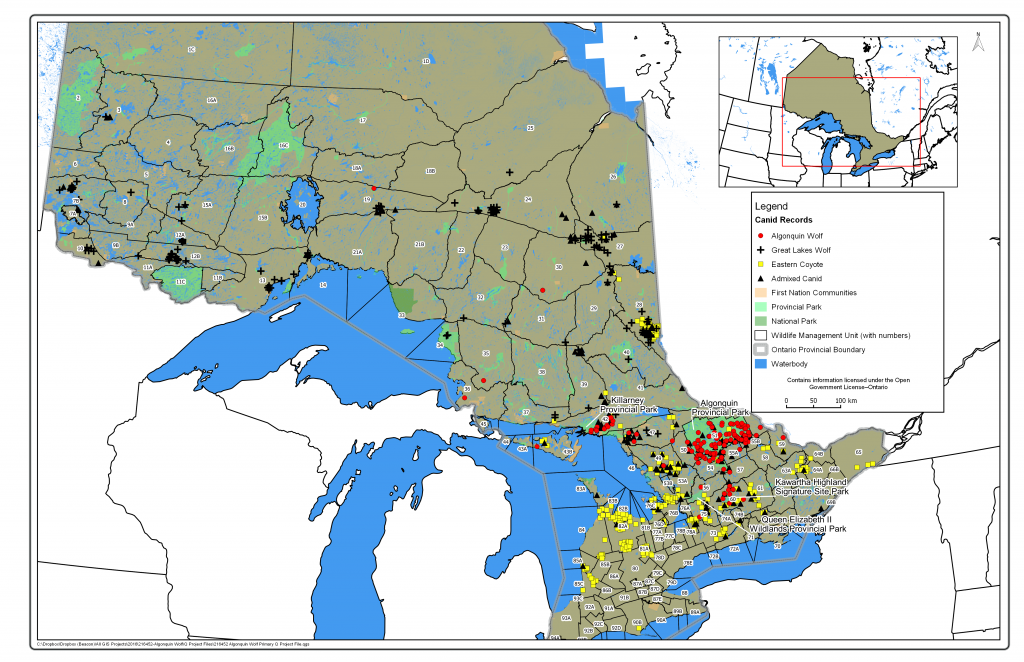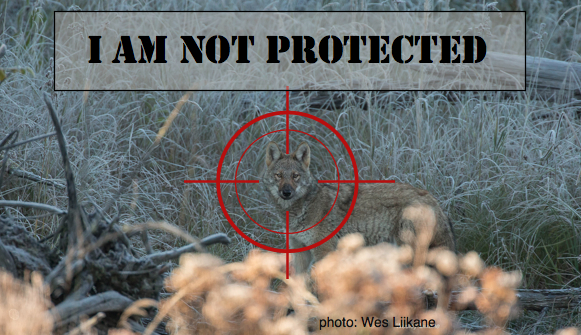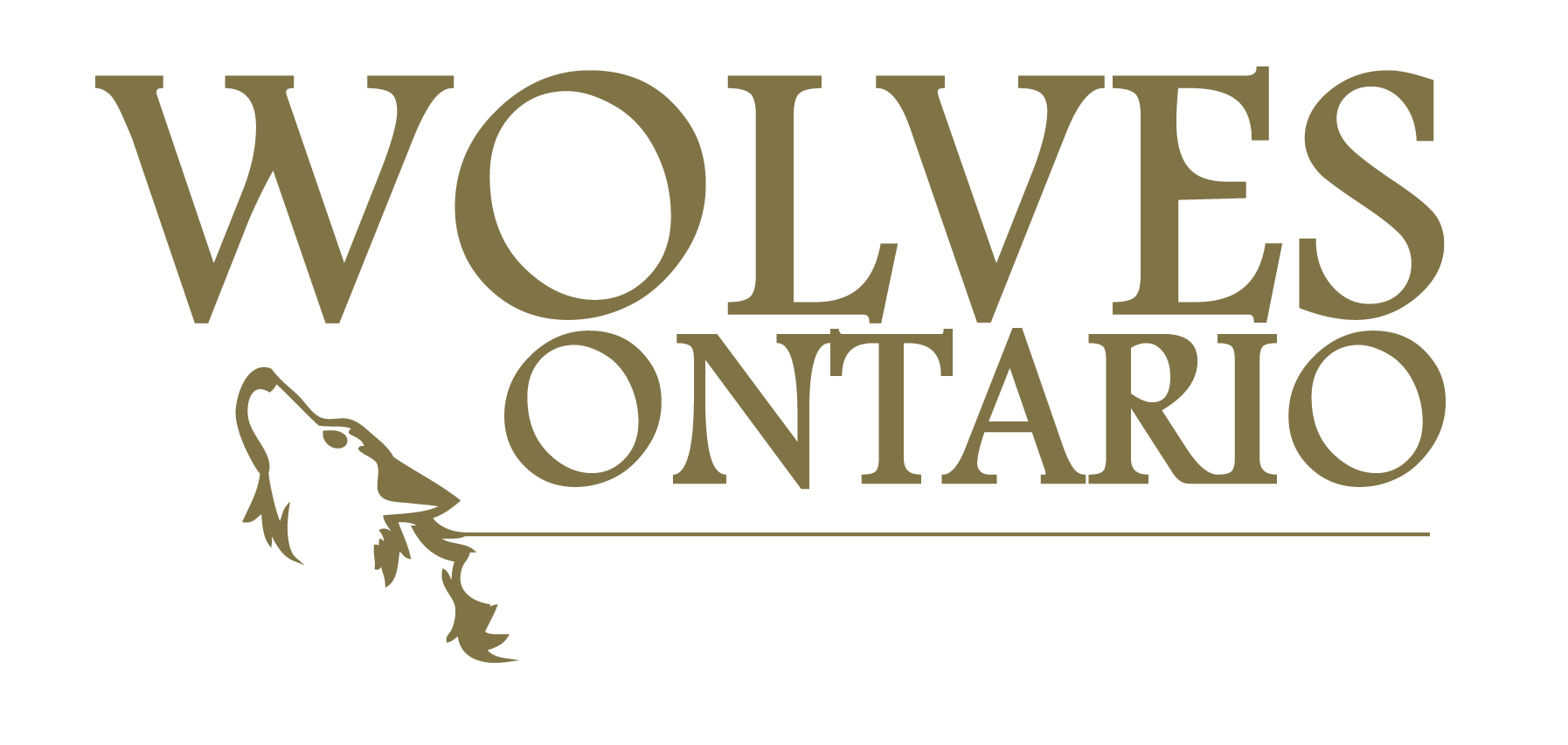Why? Currently, the draft Recovery Strategy outlines a recovery zone that is less than 1/2 of the area scientists outlined around all known Algonquin wolves.
This population is so small and patchily distributed that it is under serious threat from hunting, trapping, hybridization with coyotes and vehicle collisions. Where hunting and trapping have been banned, packs return to family-based structure, hybridization is reduced and of course, direct killing is virtually eliminated.
Read the full draft Recovery Strategy here.

Results for genetic samples taken from large canids in Ontario. Red dots represent eastern/Algonquin wolves.
The draft’s proposed Recovery Zone cuts off Algonquin wolves found farthest from their Algonquin Park stronghold, arguing that dispersing or transients do not need protection in these areas, despite research showing that “transient or dispersing animals from all canid groups (including Algonquin Wolves) were 2.7 times more likely to die from harvest mortality relative to residents.”
Aren’t the additional closures in 2016 enough to support recovery? “Although many known Algonquin Wolf territories fall partially within areas where hunting and trapping is prohibited, there are many packs whose territory extends beyond the boundary of these areas, and remain susceptible to harvest mortality.”
Algonquin wolves are the only species at risk in Ontario that can be legally killed. No one knows how many Algonquin wolves are killed each year because DNA tests are needed to identify them, and are not required.
“During the 2014/2015 harvest season, the pelts of 628 wolves and 3,643 coyotes were sold at Ontario fur auctions.” The government has no idea how many of these animals were Algonquin wolves.

